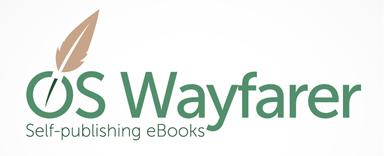Introduction
A review of the self-publishing process, is always the last thing on our minds, especially after Amazon and Smashwords have accepted our eBook! This is because it is the culmination of 18 months’ work, at least, with the last six months being intensive. However, it is a job that needs to be done.
So, why do we need to do it? Let’s briefly look at the rationale for conducting a review of the self-publishing process.
The purpose of a review is to identify lessons learnt in preparing, producing and publishing our eBook, and use this information to improve future eBooks.
And, we all want to improve, right?
A review of the self-publishing process is a job we normally return to a couple of months after publishing the eBook. Nevertheless, in the intervening period our minds are thinking off and on about the experience. Furthermore, we may have an occasional discussion about it. Sooner or later we’ll think let’s do this more formally.
Review of the self-publishing process
Our review of the self-publishing process follows a series of steps based on our approach to self-publishing as detailed in this series. I’ve listed our steps in three parts, as shown below:
Part 1 – Preparation
- Research and Planning
- Implement an eBook marketing plan
- Draft eBook content
- Conduct a site visit (our holiday!)
Part 2 – Producing the eBook
- Process Photographs & prepare cover
- Write the eBook
Part 3 – Publication
- Create and submit an EPUB and/or MOBI file for publication
- Prepare a print version (if applicable)
- Review the review
Throughout the following discussion it may be worthwhile to refer back to the relevant posts about our self-publishing process.
Let’s consider these steps in more detail.
Review of the self-publishing process: Part 1 – Preparation
Part 1 of the review of the self-publishing process discusses the following steps: research and planning; implement an eBook marketing plan; draft eBook content; and conduct a site visit (our holiday!).
Step 1: Research and planning
Here are some questions we ask about research and planning in our review of the self-publishing process:
- Was the rationale for the eBook clear and correct? That is, did we select the correct destination?
- Was the research and planning driven with enough questions? Were they appropriate?
- Did the process of online searching and recording of resources work properly? In our case this relates to Google and Evernote. We also send articles to our Kindles for review.
- Did the procedures for analysis and synthesis of the resources and data work? (e.g. I use Mind Maps)
- Did we get enough data to start drafting the eBook? Did the resources procured enable our holiday to be planned and costed?
Step 2: Implement the eBook marketing plan
A less than impressive part of our review of the self-publishing process is to reflect on our eBook marketing plan. Here are a couple of questions:
- Was our website used to market the forthcoming eBook? For example, how were our blog posts about planning for the trip received? Did we have a dedicated website page for the forthcoming eBook?
- How did we use social media to market the book (e.g. Facebook, Instagram, or twitter)? Was it successful?
As indicated in an earlier post, this is our weakest area and one that needs a lot of work. We’ll have a chance to improve our process with our forthcoming eBook about Cornwall.
Step 3: Draft our eBook content
To complete a draft of our eBook prior to our trip is a big challenge, but a goal which can add quality to the final product. Therefore, to reflect on this activity as a part of the review of the self-publishing process is important.
Some ideas we consider are:
- Were the themes identified for the eBook workable? Is identifying the themes an effective approach? Did they enrich the eBook? Will this approach be used again?
- Was it difficult to draft a “Table of Contents”? If so why? Was it helpful? How can it be improved?
- What percentage of the eBook was drafted before the trip (site visit)? Was it enough? Can it be improved?
- Did the research, planning, and drafting suggest the types and quantity of photographs required? If not, why not?
Step 4: Conducting the site visit (our holiday!)
This is no doubt the most important step in preparing our eBook. The site visit (or holiday) is the whole purpose of the eBook. So, it is important to spend quite a bit of time reflecting on this activity as a part of the review of the self-publishing process.
The key to success on the trip is the quality of the preparation and planning beforehand – so important. Therefore, was the detailed schedule/itinerary prepared beforehand “up to speed”? Were all the flight and tour arrangements accurate? Was the schedule too full/too light? Was enough data collected? Were enough photographs taken to support the themes? Did the planned practice of recording notes at the end of each day work?
As stated earlier in the series, we find our holidays (site visits) busy, exhilarating and exhausting! Therefore, getting it right before and during the visit is crucial. In the review of the self-publishing process, we spend a disproportionate amount of time reflecting on this part – it’s that important.

Our eBook: Six Days in Prague can be found on:
Amazon (Kindle US), Amazon (Kindle UK), Amazon (Kindle AU), and Amazon (Kindle CA)
Smashwords (EPUB), Smashwords also distributes to Oyster, Scribd, Yuzu, Blio and Inktera (formerly Page Foundry) and reaches OverDrive (world’s largest library ebook platform serving 20,000+ libraries), Baker & Taylor Axis 360, Gardners (Askews & Holts and Browns Books for Students), and Odilo (2,100 public libraries in North America, South America and Europe)
Kobo; Apple iTunes; Barnes and Noble
Note: Also available in print and PDF format from Blurb Bookstore
Review of the self-publishing process: Part 2 – Producing the eBook
Part 2 of the review of the self-publishing process discusses the following steps: process photographs and prepare eBook cover; and write the eBook.
Step 5: Prepare eBook photographs and eBook cover
Prepare the eBook photographs
When reflecting on our eBook photographs as a part of the review of the self-publishing process there are a few areas to consider: our photography equipment (camera and lenses), editing software, image size (as this impacts on profit), and the overall number and style of photographs. Typical questions are:
- Is the variety, quality and weight of camera equipment appropriate? As I get older the weight is becoming an issue and it is only a matter of time before I shift to a mirrorless setup.
- Should we consider video as a part of the mix? In preparation for our Cornwall trip I have purchased a DJI Osmo Pocket and will most likely add an Osmo Action camera as well to dabble in video – very challenging!
- Were the photographs taken of appropriate quality and style? Did the photographs support the themes of the eBook (e.g. did they support our focus on culture and not on iconic landmarks)? Did we limit the number of photographs in the eBook?
Of course, my penchant for always acquiring new technical gadgets ALWAYS plays into any of these questionsJ.
Prepare the eBook cover
For us, this is a very difficult area. Every self-publishing article recommends a professional cover. It is something we wrestle with all the time. Our whole philosophy is based on a “Do it yourself” approach and so we have designed our own cover template. I keep threatening to go back to “Fiver” (who did our logo) and get a fresh template made.
Perhaps we need to just do itJ
Some questions:
- Does the cover reflect our branding?
- Does the cover reflect the type of eBook (e.g. travel)
- Is the cover readable as a thumbnail?
- Should our approach be changed?
Step 6: Write the eBook
Of course, the review of the self-publishing process wouldn’t be complete without reflecting on the process of writing the eBook.
Salient questions include:
- Did the management of the writing process work? Did we keep track of everything? Did we keep to a schedule? How long did it take to write the eBook?
- Was the writing schedule realistic? Did we keep to the schedule? What did we learn from writing to a schedule? What would we change next time?
- What about the writing process itself? Were we able to manage all the resources and data for each chapter and appendix? Which chapters or appendices did we write first? Why? What would we change next time?
- How many drafts did we write before the final draft? Were we happy with this? If not, why not? How can the situation be improved? Did we complete a final “mock-up” of the real eBook for our “brains trust” to review?
- Did we stick to the principles of our writing style? We want our readers to be able to scan and read the eBook easily, for example: headings to guide the reader, shorter paragraphs, lists, photographs and tables in context, hyperlinks, use of active voice, new page for each chapter etc
Review of the self-publishing process: Part 3 – Publication
Step 7: Create and submit an EPUB and/or MOBI file for publication
As readers of this blog will know, we choose to prepare an EPUB for submission to Smashwords and conversion to Mobi for Amazon. We do this to control our eBook formatting. Plus, I am a technology and amateur programming junkie, and I need my fixJ!
Of course, there are other ways to prepare our document for submission: submitting a Microsoft Word document (Yuk – rightJ). Whichever way we choose we need to review the process.
Some questions for this part of your review of the self-publishing process:
- Did we slavishly follow the rules of the chosen distributor (e.g. Amazon, Smashwords or Draft2Digital etc)? Did we enjoy it? Can we improve upon it?
- Were we able to achieve a satisfactory layout? Are the photographs of good quality? Are the tables readable? Are the page breaks in the right places? Do we need to improve? (Yes!) How can this be achieved?
- Did we include front and back matter? Were these separate for each distributor (e.g. you can’t include Amazon links in a Smashwords document and vice versa)? How can we improve this? For example, did we follow different templates for each eBook, especially for front and back matter plus covers.
- Are we satisfied with the overall process? How can it be improved? Do we want to change distributors? Why? Are we prepared for the work involved in changing our process? Is it worthwhile?
Step 8: Consider a print version
Choosing to self-publish a printed version of our eBook generally involves a whole new and additional process. This is especially the case if our eBook contains photographs, tables and diagrams (which it does); that is, anything other than straight forward text; and when we want to maintain total control over the finished product.
In this instance, the review of the self-publishing process involves a review of a different approach to that used with the eBook. However, the questions are the same:
- Did our chosen system/publisher/distributor satisfy our needs?
- Was the distribution wide enough? Was print on-demand available?
- Did the distributor offer a complete online selling and payment infrastructure?
- Was the process easy to follow? Were the guidelines adequate? Was help available when we needed it? Were your questions resolved?
- Did we have full control over the final product?
- Would we consider self-publishing a printed version again? Would another system suit us better? What are the alternatives? Do we really want to change?
Step 9: Review the review process!
When we reach the stage of reviewing the review, we know we’re near the end. Thank goodness!
Here are a few questions for this stage:
- Did the review reveal steps we can take to improve our self-publishing effort next time? Have we recorded this information?
- Can the review process be improved? Did it take too long? Are there stages we would delete or add or change?
- Have we decided how to incorporate any lessons learned from the review into our self-publishing process?
Visits: 340









Leave A Comment